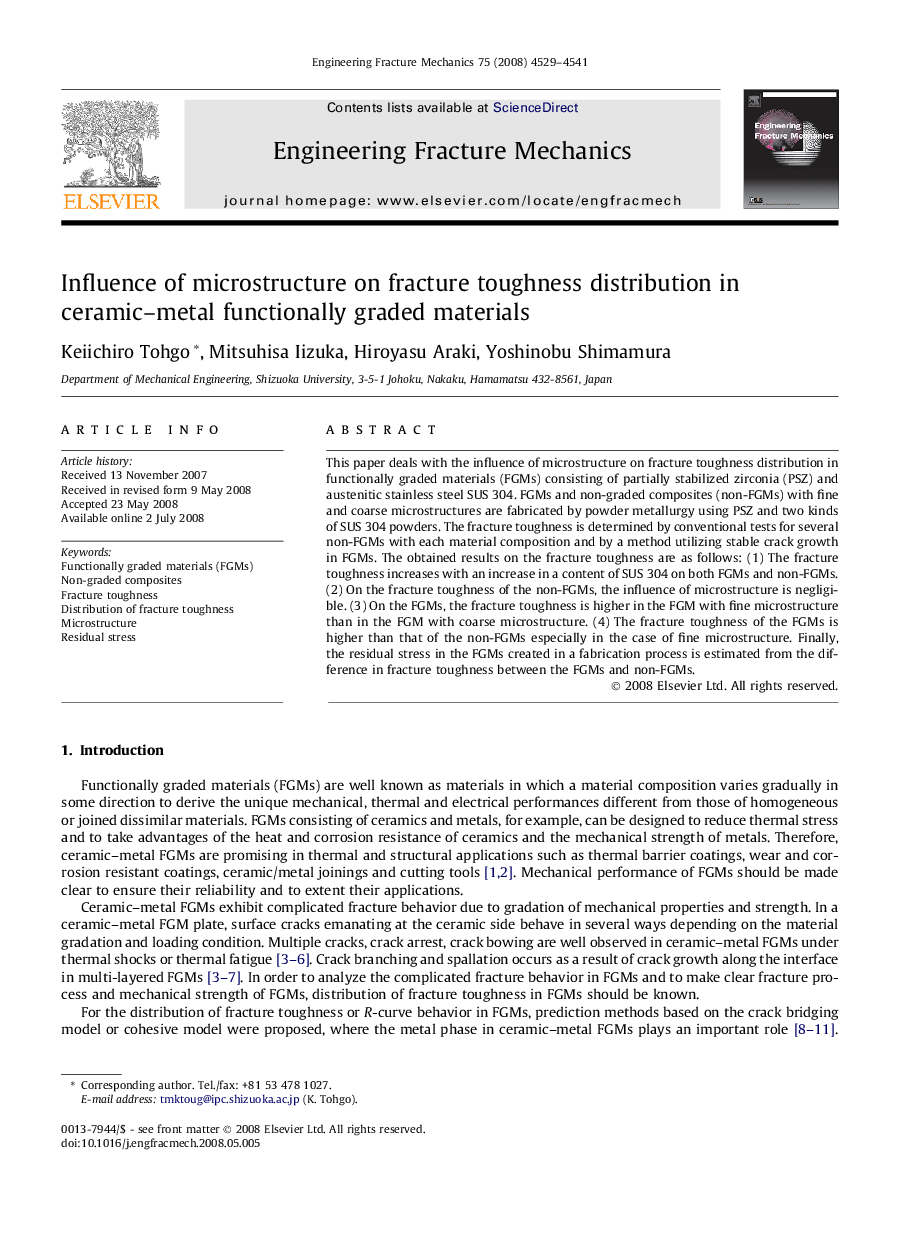| Article ID | Journal | Published Year | Pages | File Type |
|---|---|---|---|---|
| 775750 | Engineering Fracture Mechanics | 2008 | 13 Pages |
This paper deals with the influence of microstructure on fracture toughness distribution in functionally graded materials (FGMs) consisting of partially stabilized zirconia (PSZ) and austenitic stainless steel SUS 304. FGMs and non-graded composites (non-FGMs) with fine and coarse microstructures are fabricated by powder metallurgy using PSZ and two kinds of SUS 304 powders. The fracture toughness is determined by conventional tests for several non-FGMs with each material composition and by a method utilizing stable crack growth in FGMs. The obtained results on the fracture toughness are as follows: (1) The fracture toughness increases with an increase in a content of SUS 304 on both FGMs and non-FGMs. (2) On the fracture toughness of the non-FGMs, the influence of microstructure is negligible. (3) On the FGMs, the fracture toughness is higher in the FGM with fine microstructure than in the FGM with coarse microstructure. (4) The fracture toughness of the FGMs is higher than that of the non-FGMs especially in the case of fine microstructure. Finally, the residual stress in the FGMs created in a fabrication process is estimated from the difference in fracture toughness between the FGMs and non-FGMs.
